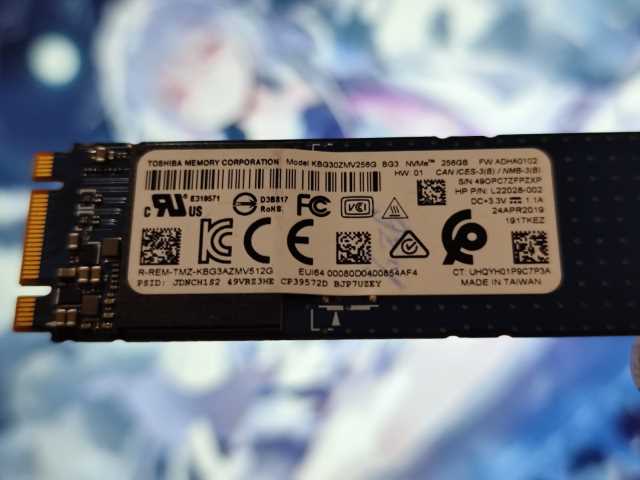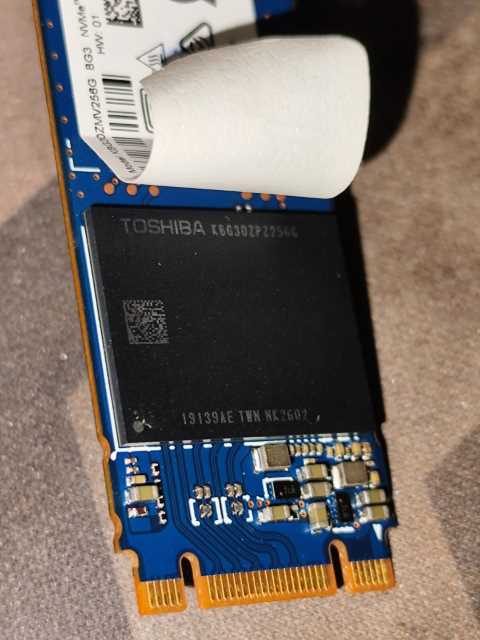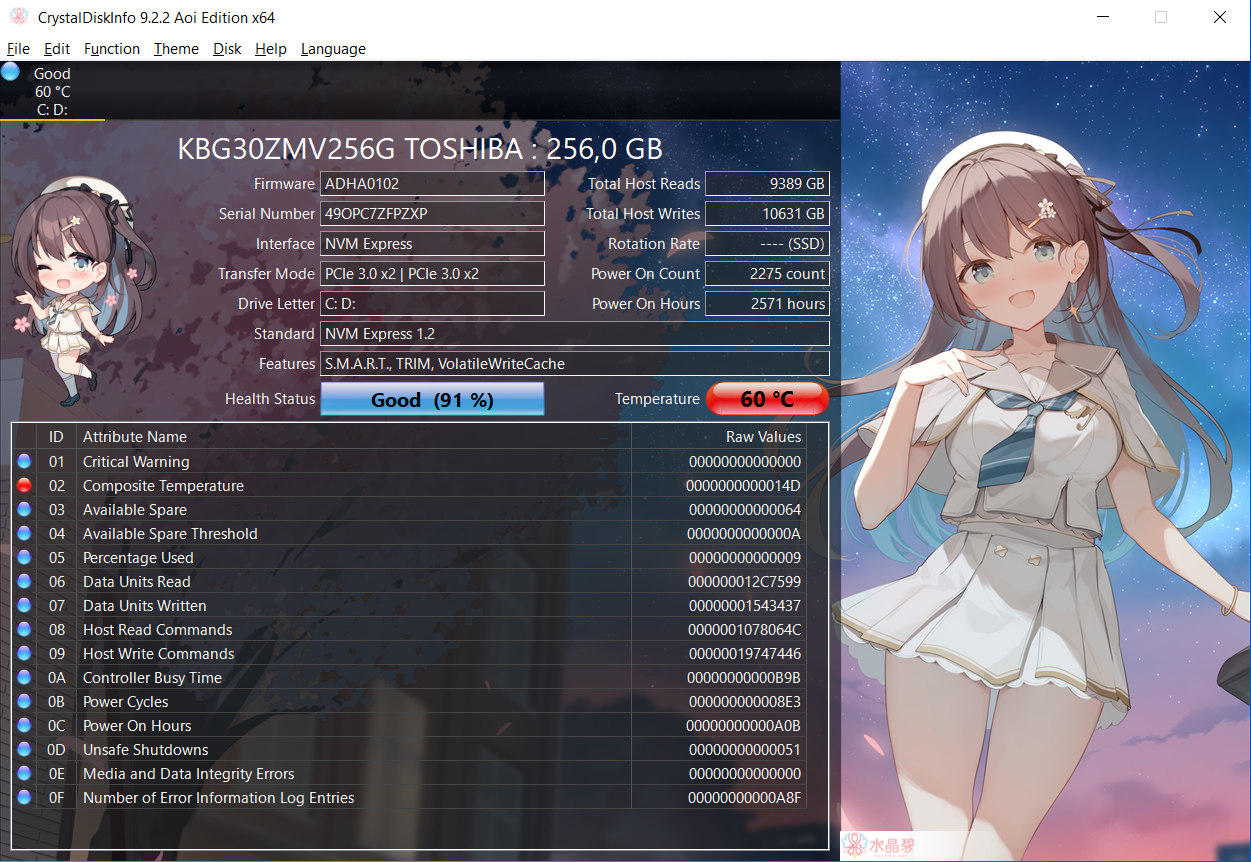Comparing: AMD Radeon HD 7310 IGPU VRAM Disk vs TOSHIBA KBG30ZMV256G
In this comparison, we analyze two Disks: AMD Radeon HD 7310 IGPU VRAM Disk and TOSHIBA KBG30ZMV256G, using synthetic benchmark tests to evaluate their overall performance. This side-by-side comparison helps users understand which hardware delivers better value, speed, and efficiency based on standardized testing. Whether you're building a new system or upgrading an existing one, this benchmark-driven evaluation offers valuable insights to guide your decision.

AMD Radeon HD 7310 IGPU VRAM Disk
| Type: | Disks |
|---|---|
| Model: | Radeon HD 7310 IGPU VRAM Disk |
| Capacity: | 128MB |
| Interface: | DDR3 |

TOSHIBA KBG30ZMV256G
| Type: | Disks |
|---|---|
| Model: | KBG30ZMV256G |
| Capacity: | 256GB |
| Interface: | PCIe 3.0 x2 |
Specification Comparison Table
This specification comparison presents technical details of several devices or components to help you understand the key differences between each option. Use this table as a reference to determine which device best suits your needs.
| Specification | AMD Radeon HD 7310 IGPU VRAM Disk | TOSHIBA KBG30ZMV256G |
|---|---|---|
| Brand | - | TOSHIBA |
| Format | VRAM Disk | SSD M.2 NVMe 2280 |
| Capacity | 128MB | 256GB |
| Interface | DDR3 | PCIe 3.0 x2 |
Submission Comparison Table
This submission comparison table displays the number and details of benchmark data submissions from various devices or components. This information helps you understand the performance based on the benchmarks that have been tested, as well as providing an overview of the consistency and popularity of the available benchmark results.
| No. | Benchmark Software | AMD Radeon HD 7310 IGPU VRAM Disk | TOSHIBA KBG30ZMV256G |
|---|---|---|---|
| 1 | ATTO Disk Benchmark - 64M |
Read: 966.34 MB/s Write: 378.12 MB/s |
Read: 1000.00 MB/s Write: 589.86 MB/s |
| 2 | CrystalDiskMark |
Read: 393.23 MB/s Write: 393.66 MB/s |
Read: 774.69 MB/s Write: 401.20 MB/s |
Submission Comparison Chart
This chart visualizes the benchmark scores comparison between two hardware devices based on submitted data.
Media Gallery
A collection of photos of tested hardware. These images can help you identify the physical form, model, and variant of the hardware in question. These photos are from our own documentation, and if they are not available we may not be able to document them.
About Hardware AMD Radeon HD 7310 IGPU VRAM Disk
The AMD Radeon HD 7310 is an integrated GPU (iGPU) based on the Terascale 2 architecture embedded in some early generation E1 series APUs, such as the AMD E1-1200. With 80 Stream Processors, this GPU is designed for light tasks such as video playback, basic computing, and casual gaming with low graphics settings. Despite being an entry-level GPU and being quite old, the Radeon HD 7310 is still able to operate well for basic needs and certain technical experiments.
In this test using an HP 1000 1b05au device paired with an AMD E1-1200 processor, 4GB DDR3 RAM, and Windows 7 operating system, an interesting experiment was conducted by converting part of the VRAM allocation into a VRAMDisk using specialized GPU RAM Drive software.
VRAMDisk is a method that utilizes VRAM capacity as high-speed temporary storage, just like RAMDisk but with graphics memory. In this configuration, of the total VRAM of 384MB (plus shared memory), about 128MB was set aside to be used as a VRAMDisk. Despite the small capacity, the read and write speeds were quite surprising:
- CrystalDiskMark:
- Read: 393.23 MB/s
- Write: 393.66 MB/s
This figure shows that even using an older generation GPU with DDR3 memory and a 128-bit interface, the VRAM still has enough bandwidth for light cache tasks or fast storage experiments. This technology is not intended for daily use, but it can be an interesting alternative for technical purposes, testing, or short-term local access speeds of small files.
Given its limitations-both in terms of VRAM capacity, iGPU performance, and modern driver support-the AMD Radeon HD 7310 is definitely not an option for gaming or heavy workloads right now. However, experiments like this VRAMDisk show that legacy devices can still be creatively utilized in certain contexts, especially in resource-constrained environments.
Device test (testbed) :
Device: HP 1000 1b05au
Software: GPU Ram Drive
CPU: AMD E1-1200
GPU: AMD Radeon HD 7310 (Integrated)
RAM: 4GB DDR3 Single Channel 2 DIMM 1066MHz
OS: Windows 7
Wednesday, 26 December 2012 14:27:32 | Update: 1 month ago
About Hardware TOSHIBA KBG30ZMV256G
The TOSHIBA KBG30ZMV256G is a 256GB NVMe solid-state drive (SSD) specifically designed to deliver high performance in modern computing devices such as ultrabooks, thin laptops and space-constrained systems. Sporting an M.2 2280 form factor, this SSD offers an ideal combination of high speed and compact design, making it an excellent choice for users who require fast storage without sacrificing physical space within the device.
It is built with a PCIe Gen3 x2 interface and supports the NVMe 1.3 protocol, which is significantly faster than traditional SATA-based SSDs. Thanks to 3D NAND flash technology, the TOSHIBA KBG30ZMV256G is able to deliver consistent performance and better power efficiency, while extending the lifetime and reliability of the device. This technology also contributes to low power consumption, which is especially important for laptops and mobile devices that rely on battery efficiency.
In tests conducted using a ThinkPad T470 with an Intel Core i5-6300U processor, 8GB of RAM, and Windows 10 22H2 operating system, this SSD performed very well for a variety of daily computing needs. Based on the CrystalDiskMark benchmark, read speeds reached 774.69 MB/s and write speeds of 401.20 MB/s. Tests with the ATTO Disk Benchmark showed read speeds of up to 1000 MB/s and 589.86 MB/s write, while in the AS-SSD Benchmark, read speeds jumped to 1363.84 MB/s and 786.62 MB/s write. These results show that the SSD is capable of handling demanding tasks such as fast booting, large application loads and large file transfers very efficiently.
Overall, the TOSHIBA KBG30ZMV256G is an ideal choice for users who want an NVMe storage upgrade with high speed, low power consumption and a compact design. Suitable for professionals who require consistent performance under high mobility, this SSD also offers added value in terms of energy efficiency and long-term durability. As a product from a reputable brand like Toshiba (now Kioxia), its reliability and quality have been proven in the global market.
Device test (testbed):
Device: ThinkPad T470
CPU: i5-6300U
RAM: 8GB RAM
OS: Windows 10 22H2
Thursday, 10 August 2023 10:15:02 | Update: 1 month ago



